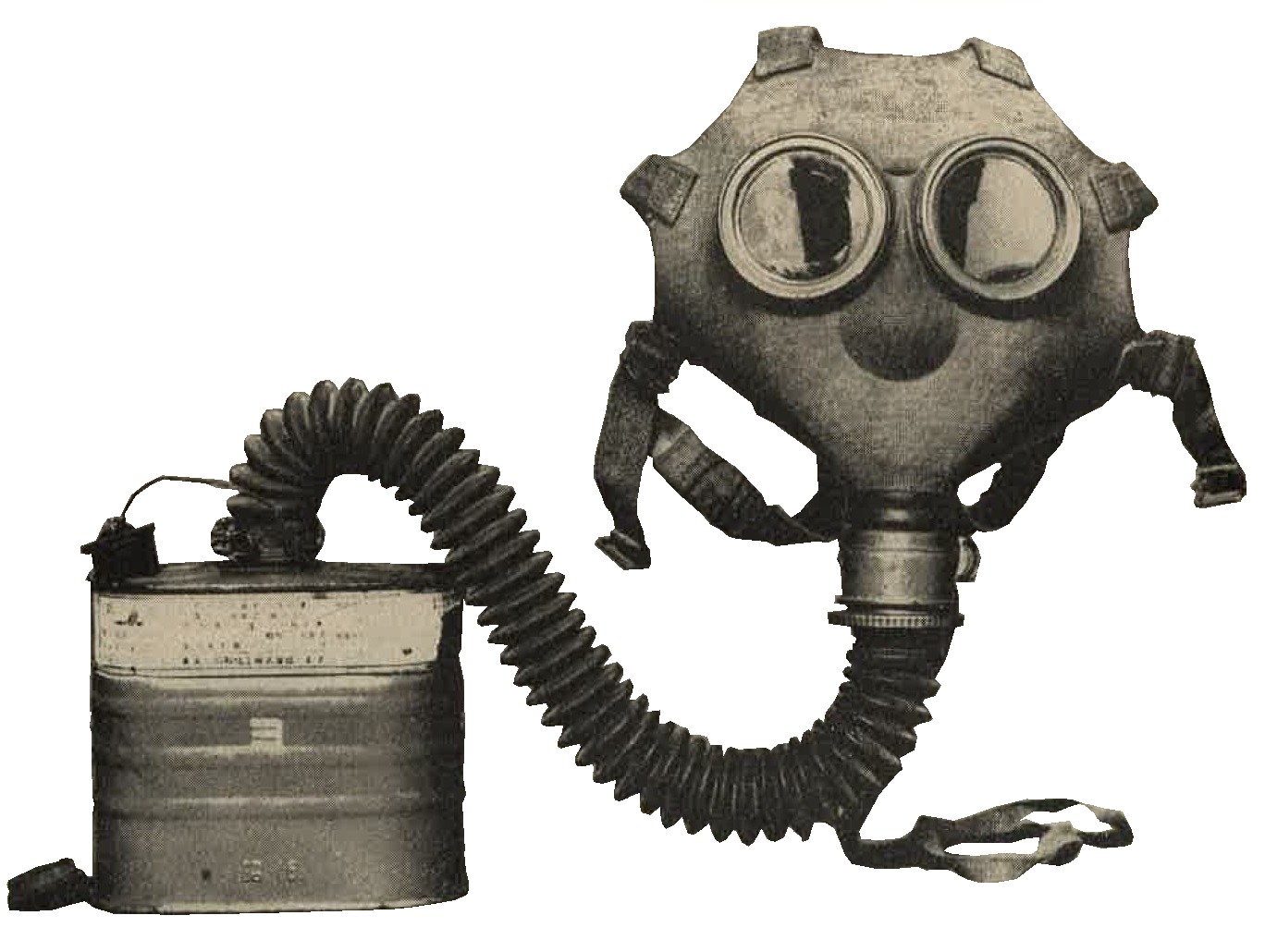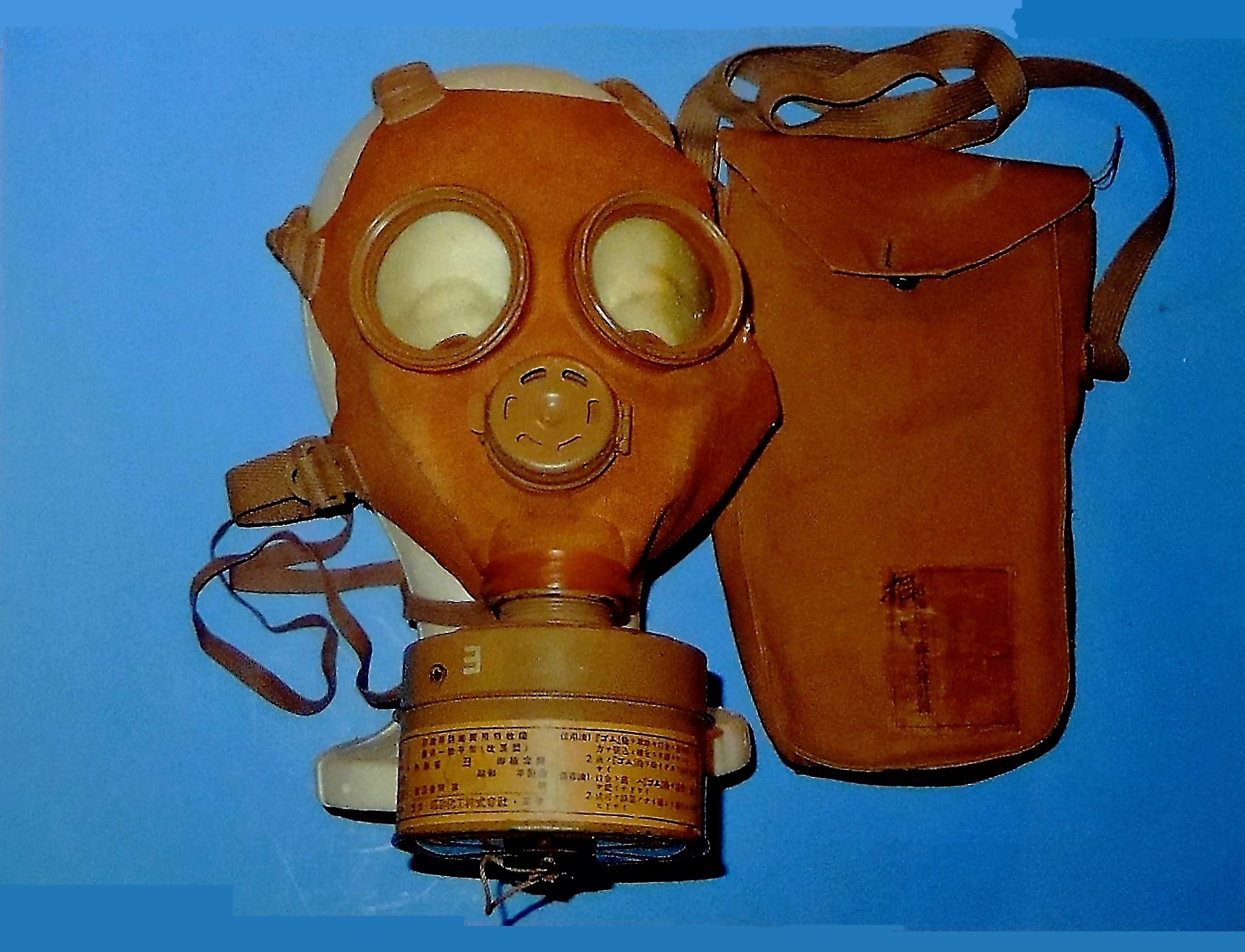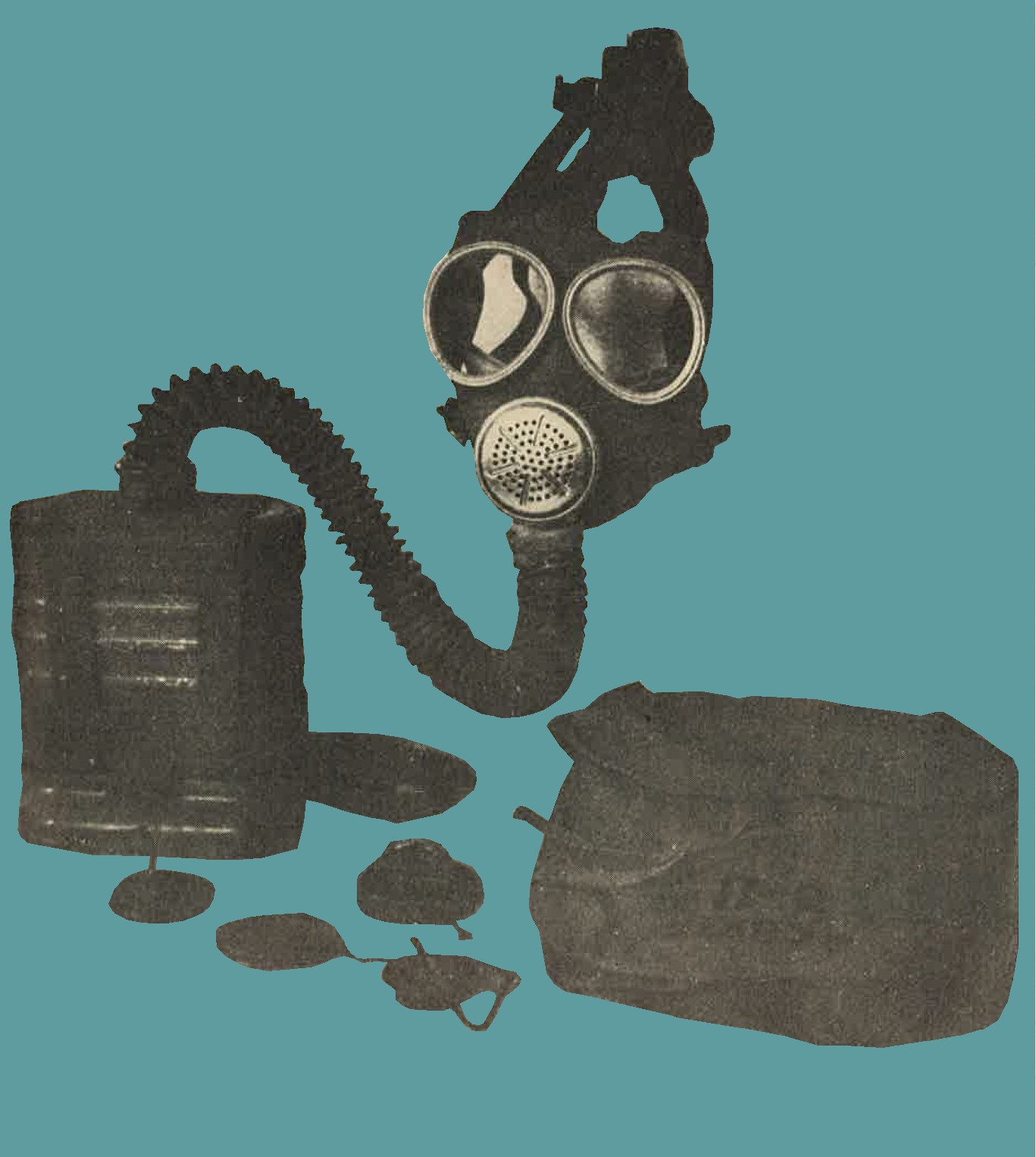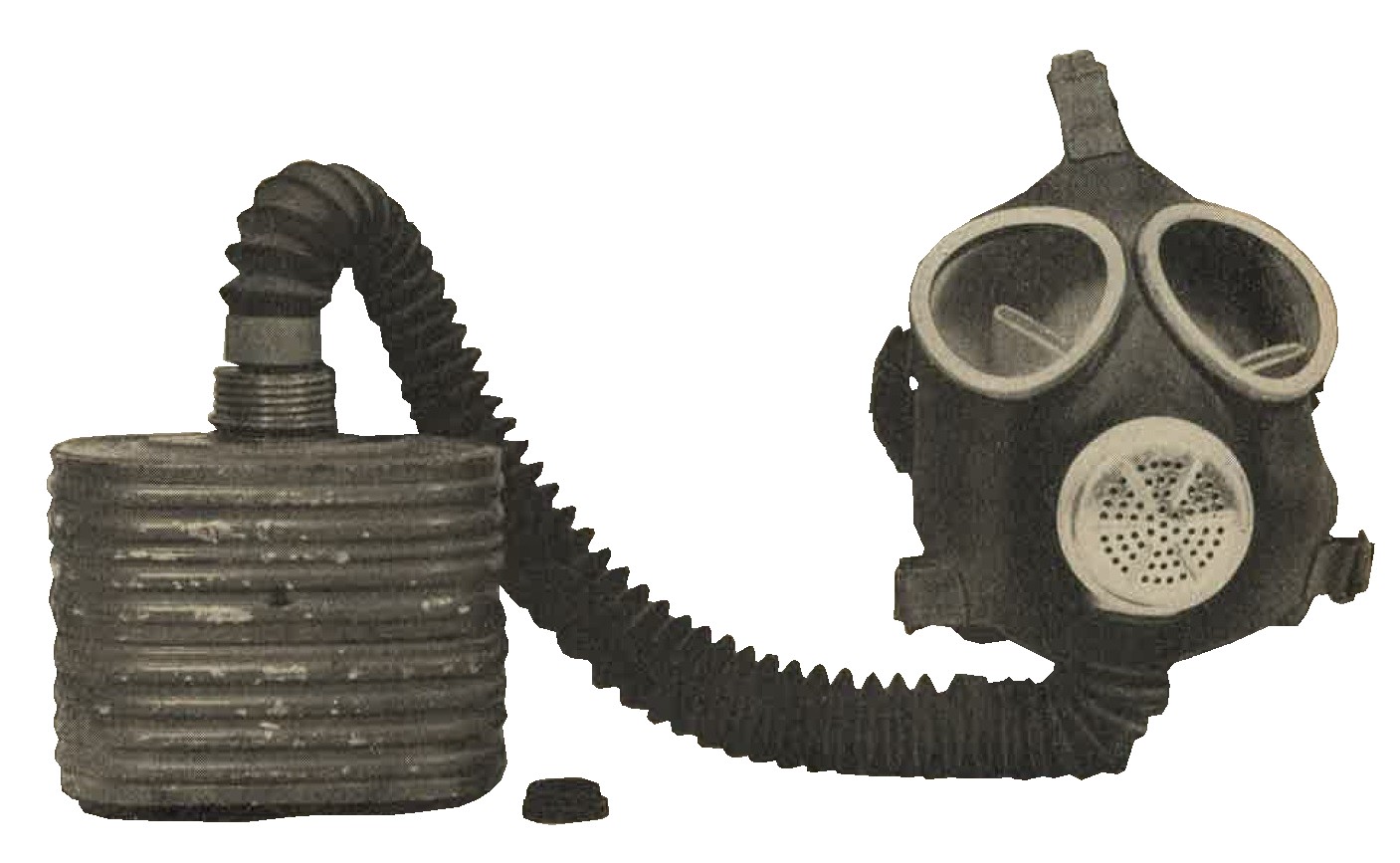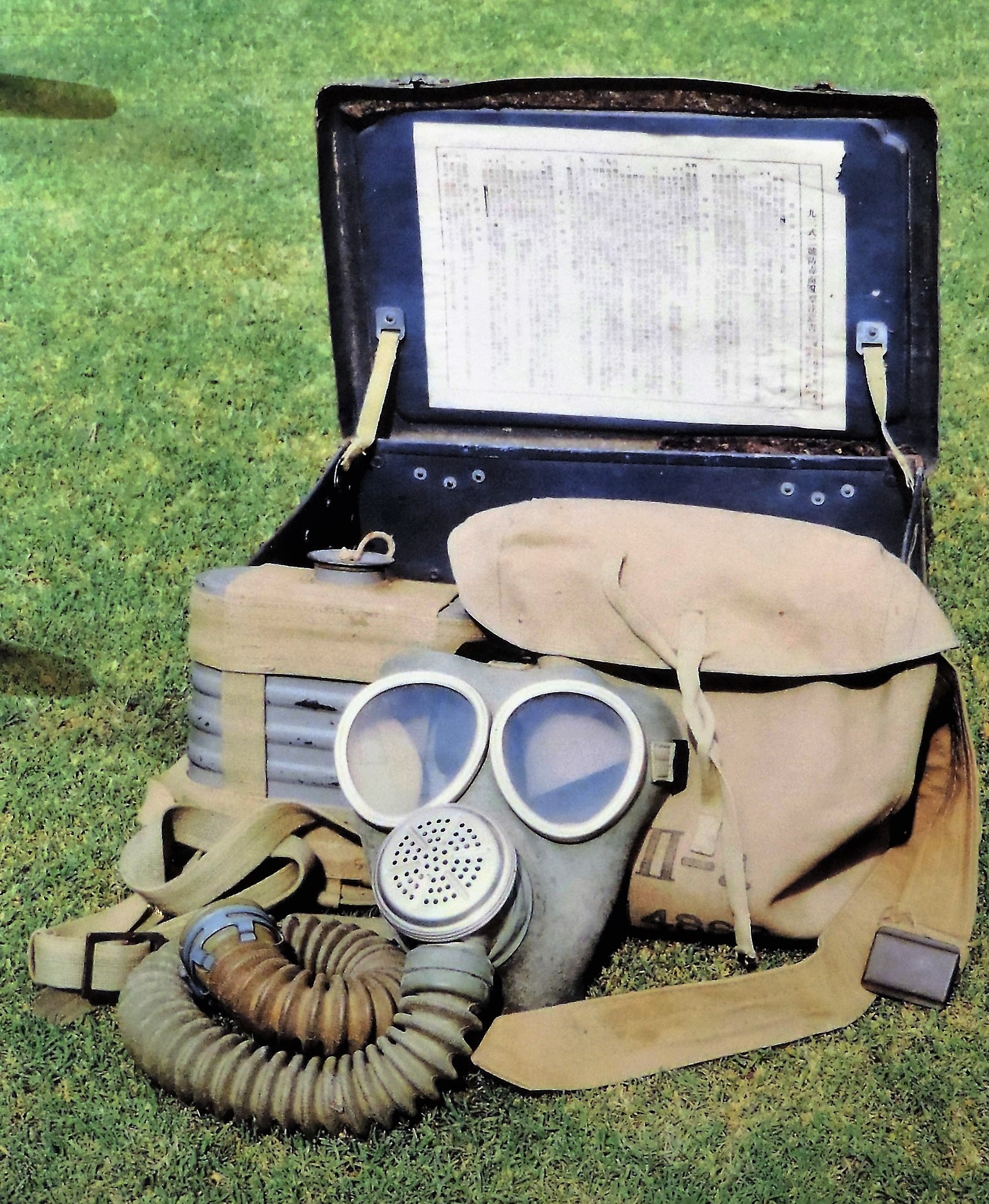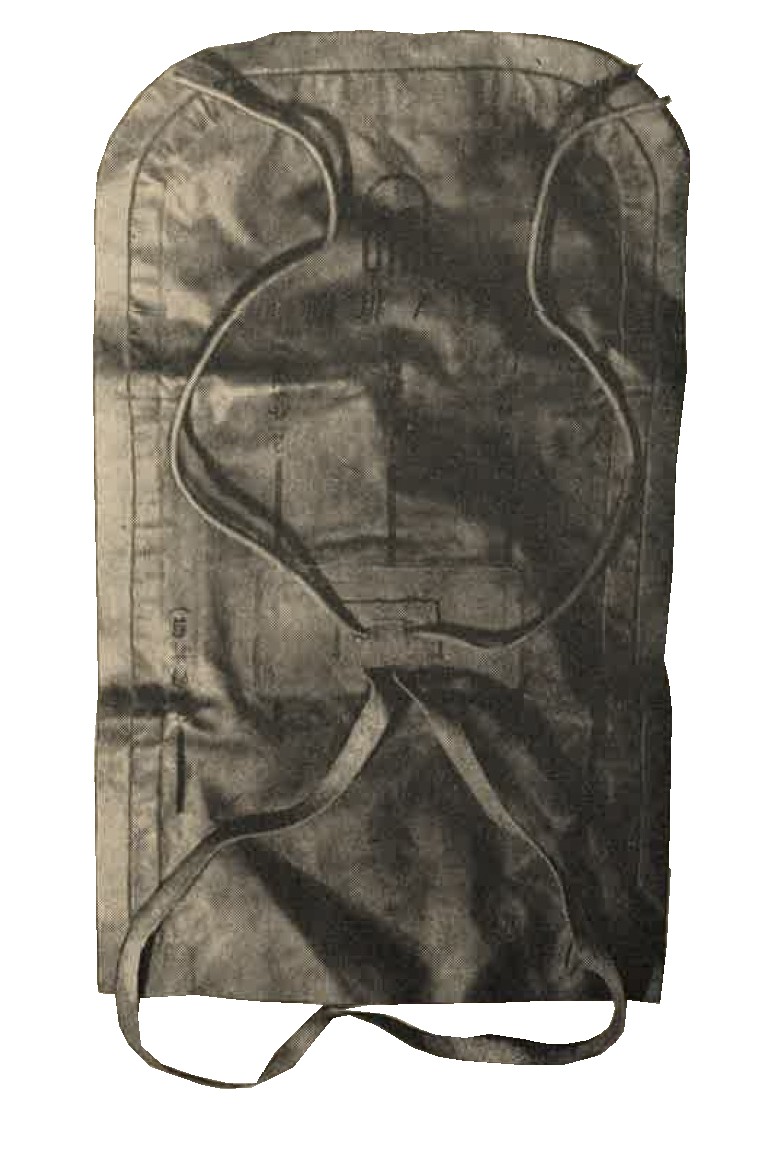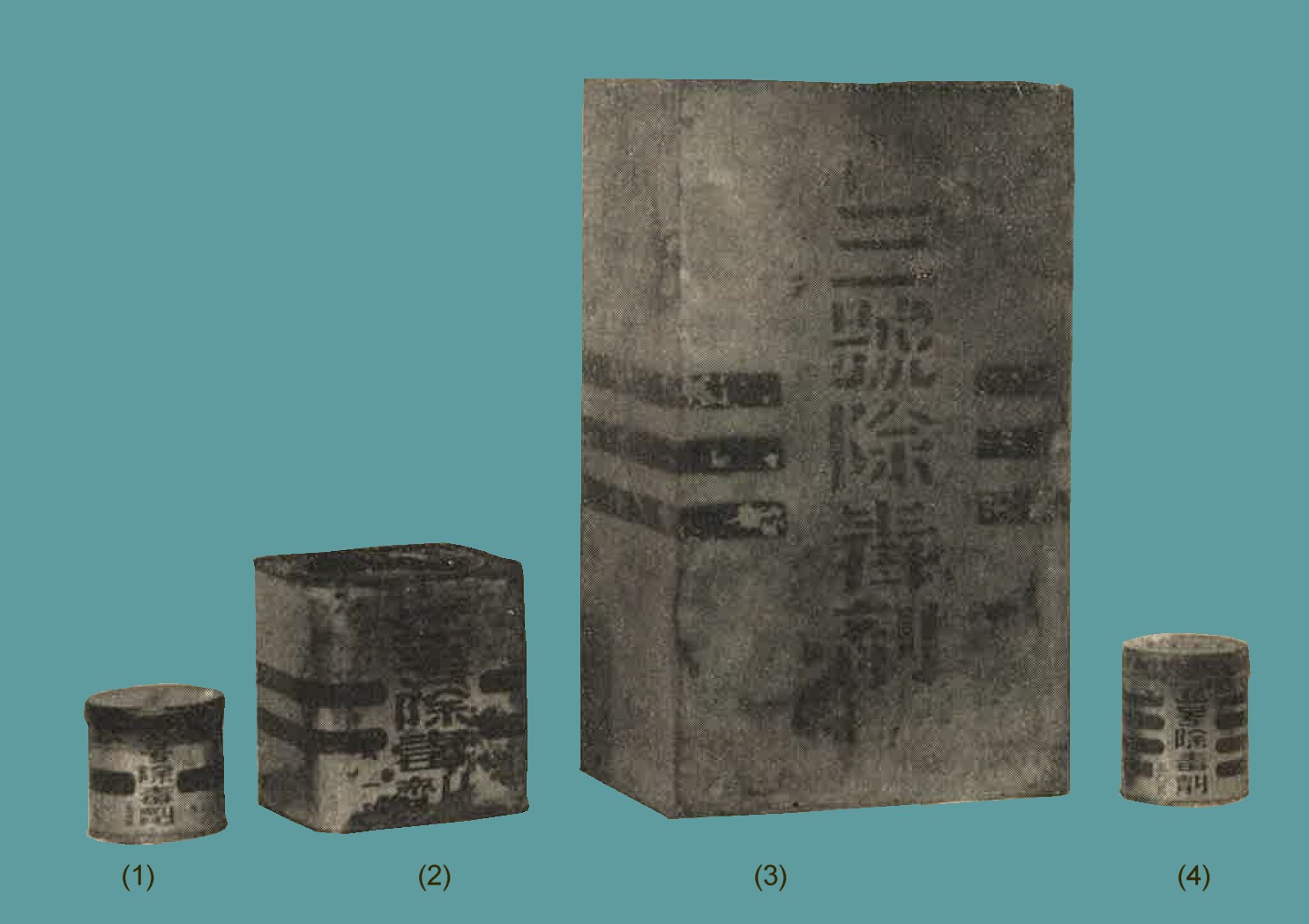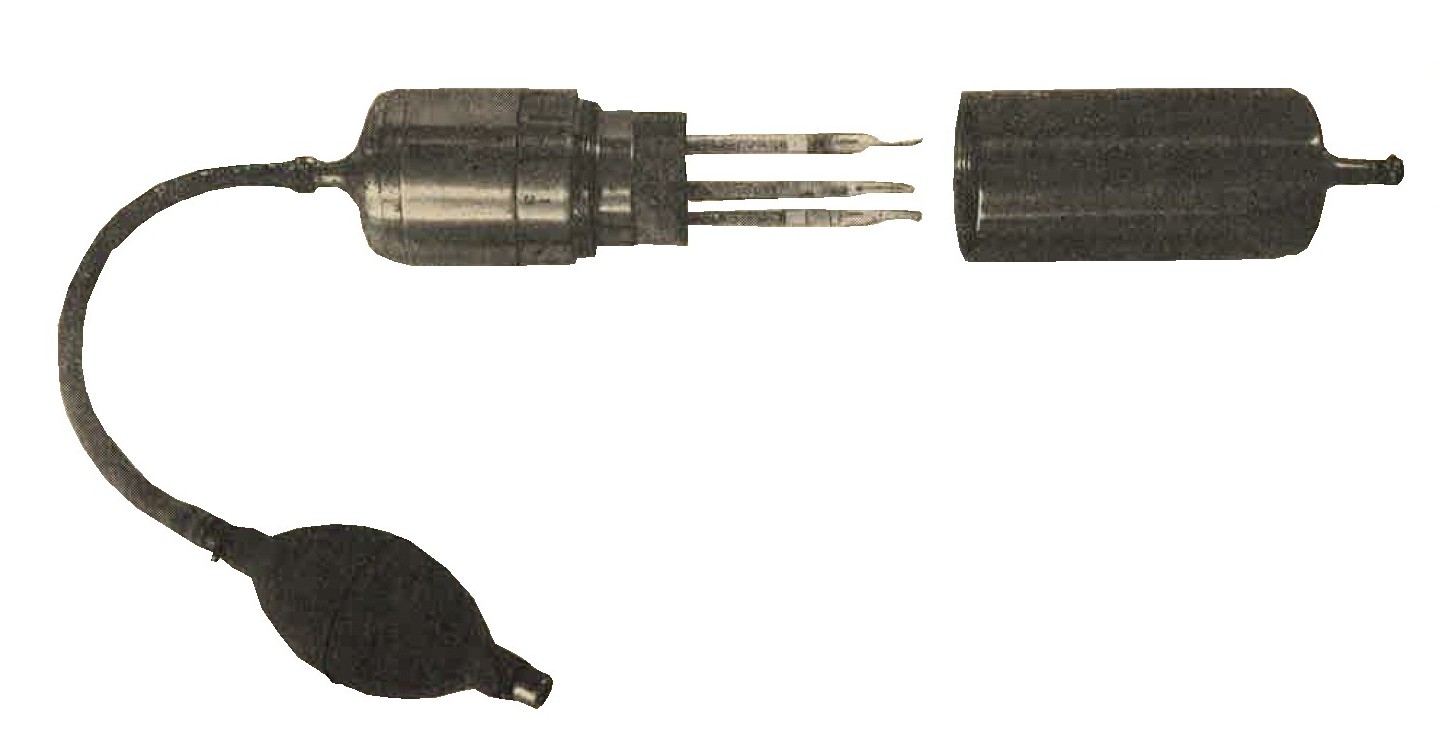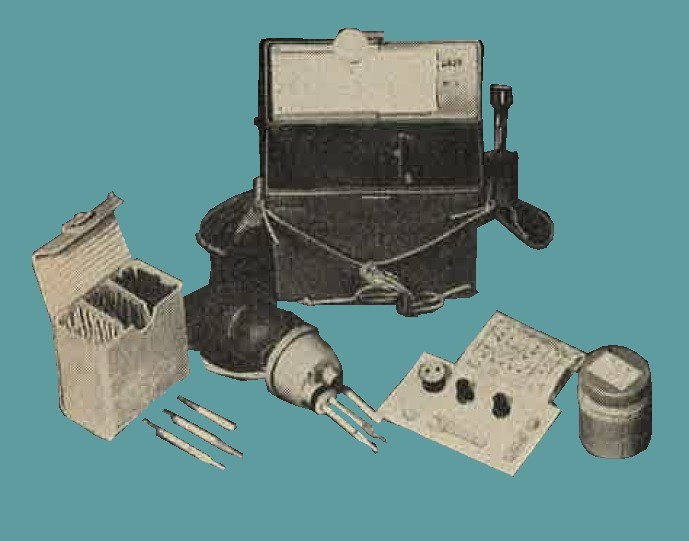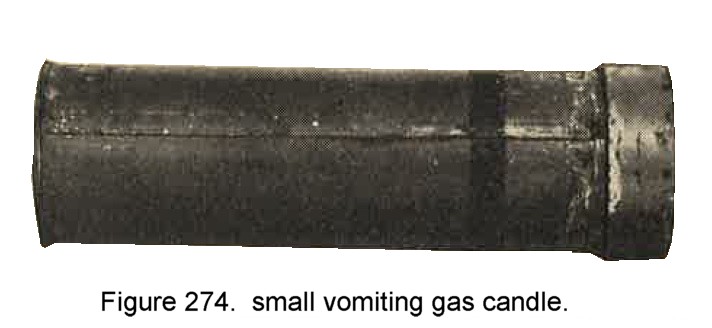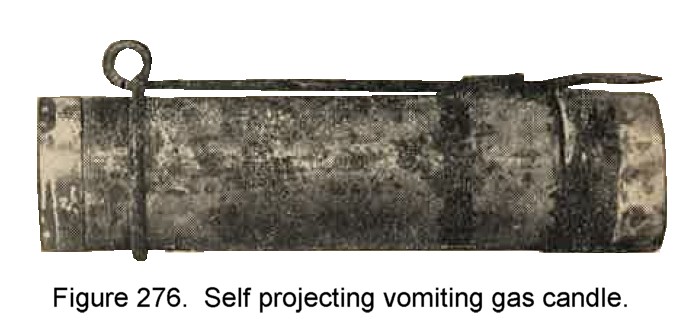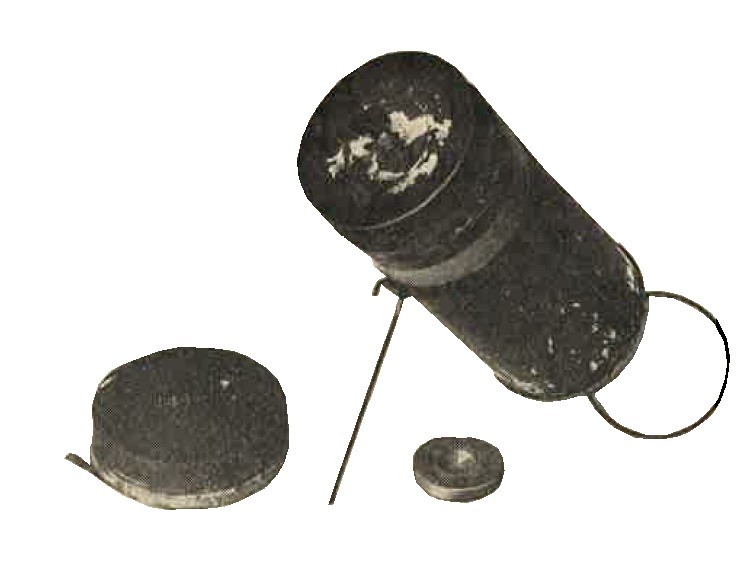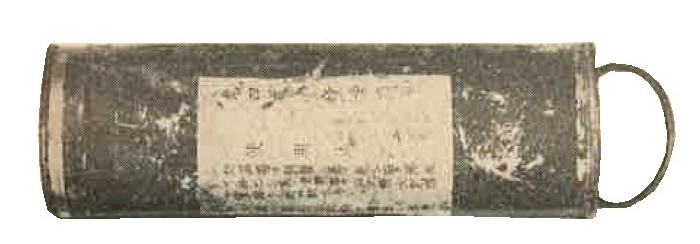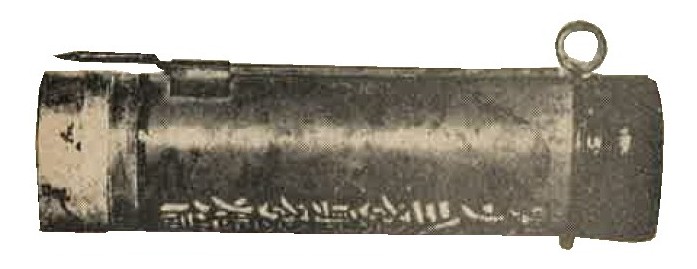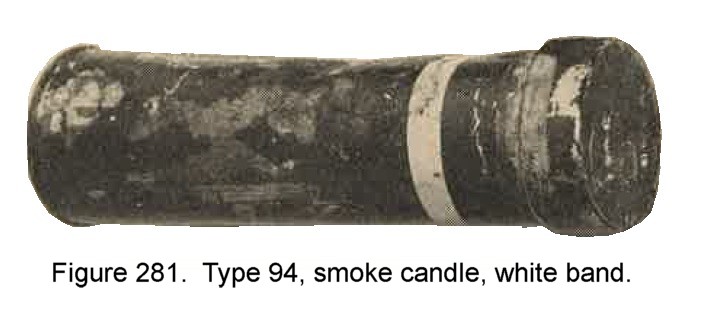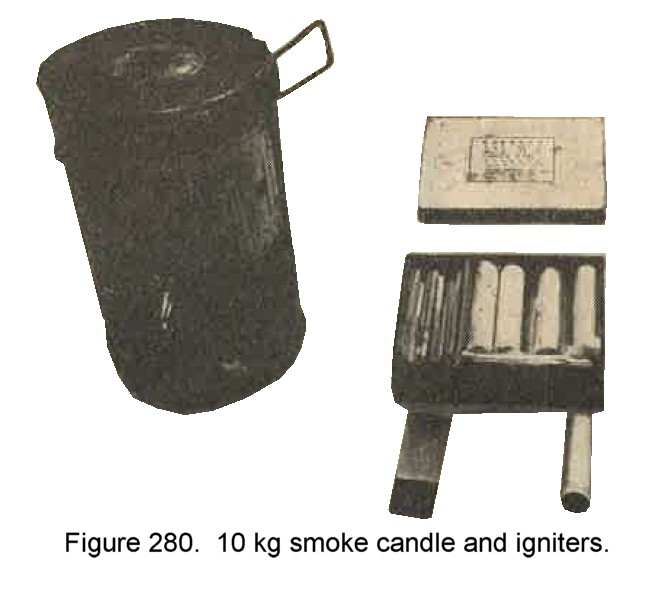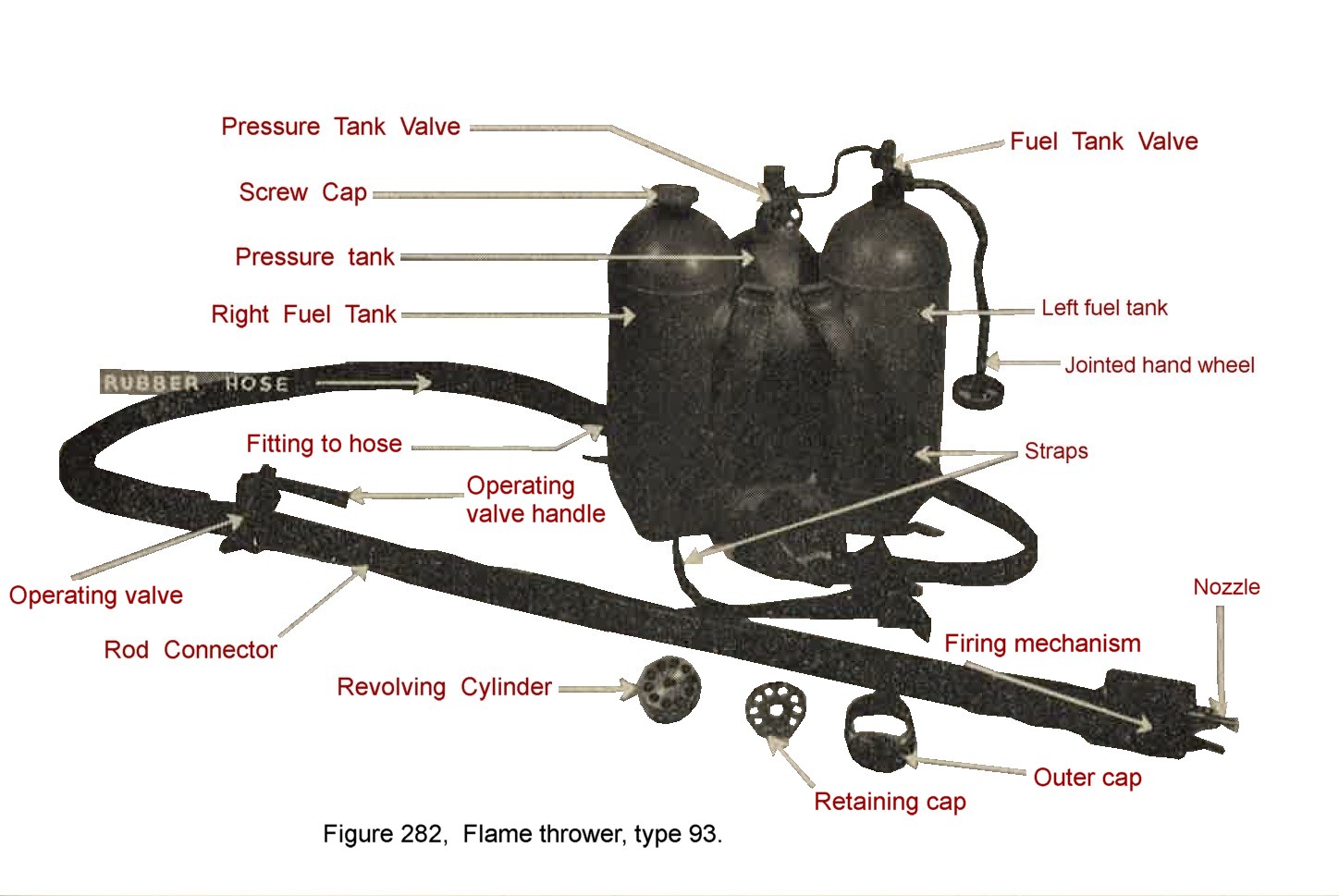CHAPTER 9 - WWII JAPANESE ARTILLERY AND CHEMICAL

SECTION V - WWII JAPANESE CHEMICAL WARFARE (PART 1).
1. WWII JAPANESE GAS MASKS
a. General. All the known models of gas masks used by Japanese military forces are of the air hose and separate canister type. Rubber stoppers are provided to permit sealing of the canister when it is in use to protect the contents against moisture. IN general the Japanese gas masks afford good protection against the common types of war gases; their facepieces, however, are uncomfortable when fitted to the average occidental face. The American canisters can be ftted to these masks for better protection aganist hydrocyanic acid (AC) and cyanogen chloride (CC) gas than the Japanese canister gives. The existence of horse gas masks of the damp mask type has been reported.
b. Japanese Army gas mask "Model 95".
It has a Khaki stockinette covered facepiece (figure 258) with molded tissot tube and circular eyepieces with removable threaded rims. The eyepieces ae made of glass. A total of 6 elastic straps secure the mask to the head. The Khaki colored canister is approximately 6 inches high, 5 inches wide and 2 3/4 inches thick. The carrier is a rectangular canvas bag. A rubberized hood is sometimes attached to this mask to protect head and shoulders.
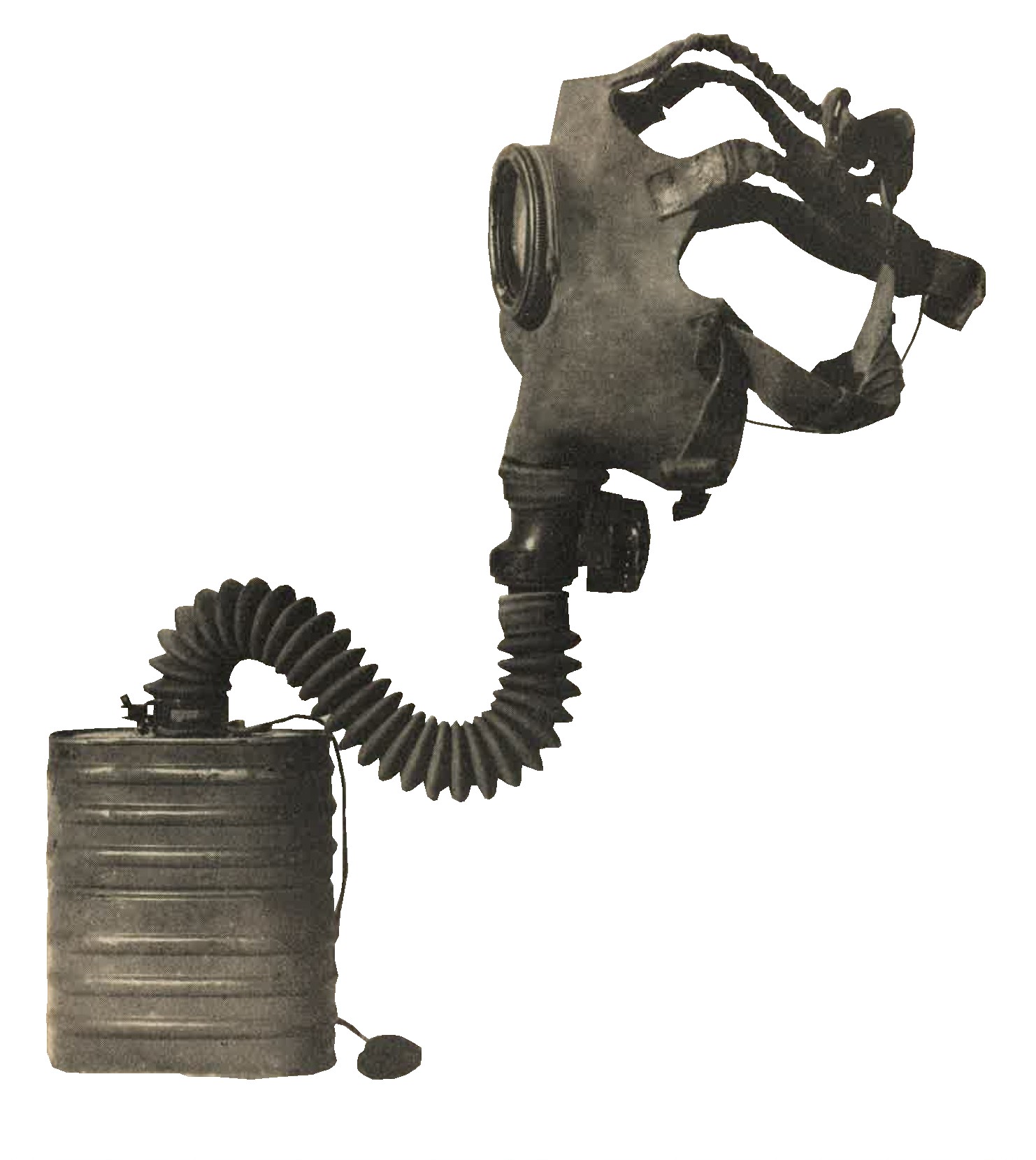
Figure 258. Army gas mask Model 95. |
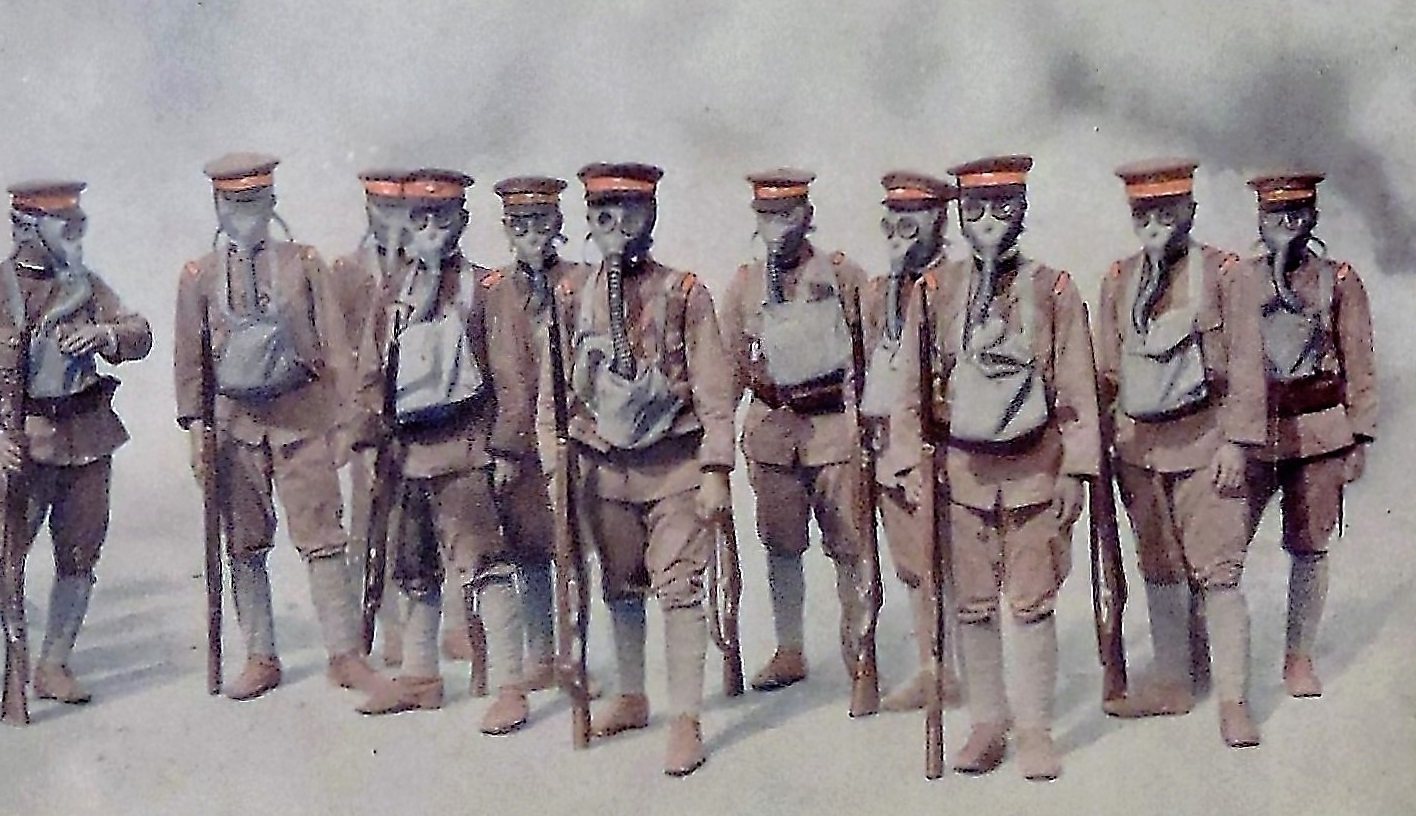
Figure 258-a. Postcard of WWII Japanese soldiers wearing gas masks. |
c. Japanese Army gas mask "Model 99".
Similar in appearance to the "Model 95" (figure 259), the gas mask is fitted with a rubber nosepiece held inside the facepiece by a stud, and has a short canister only about 4 1/2 inches high.
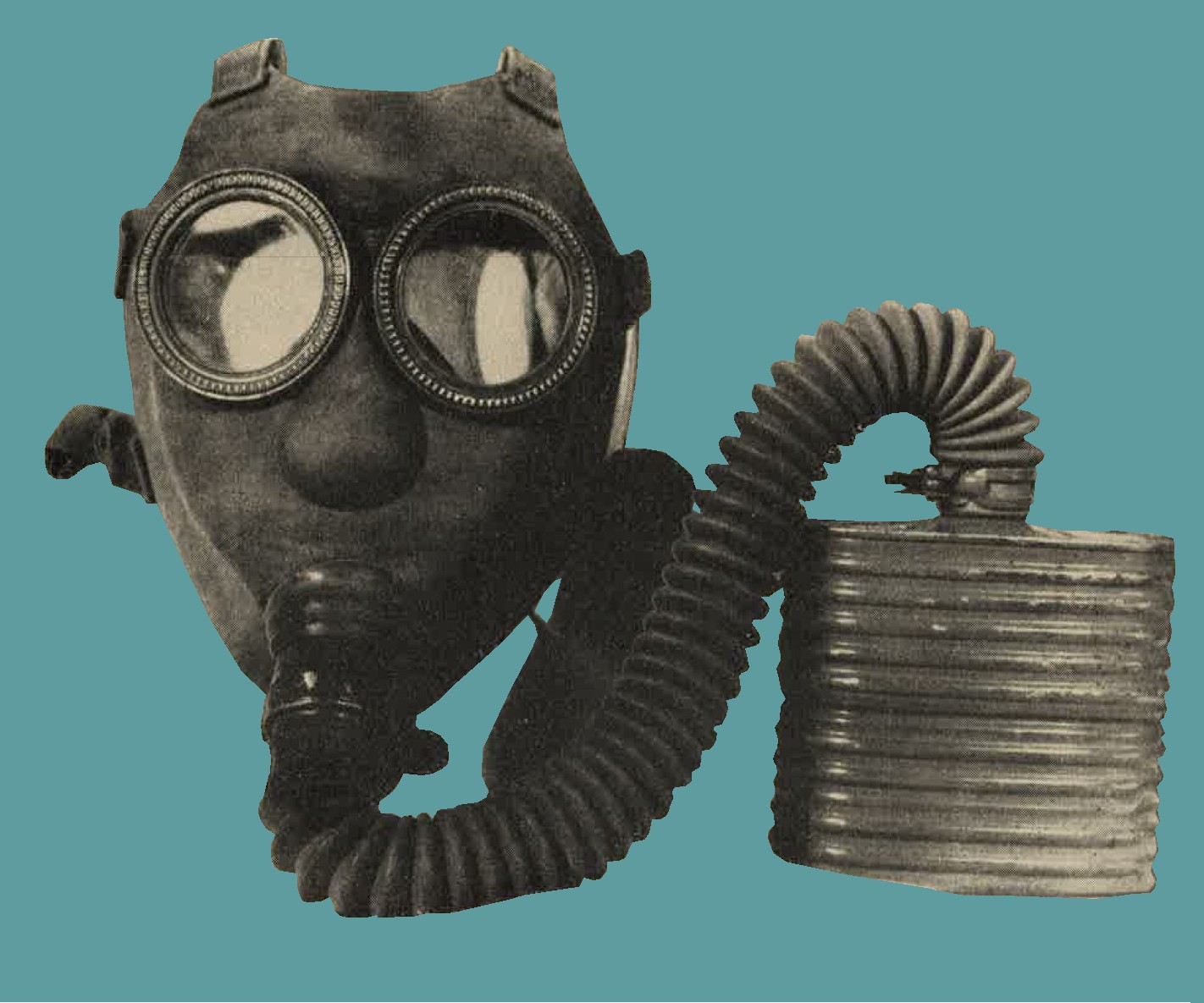
Figure 259. Army gas mask "Model 99". |
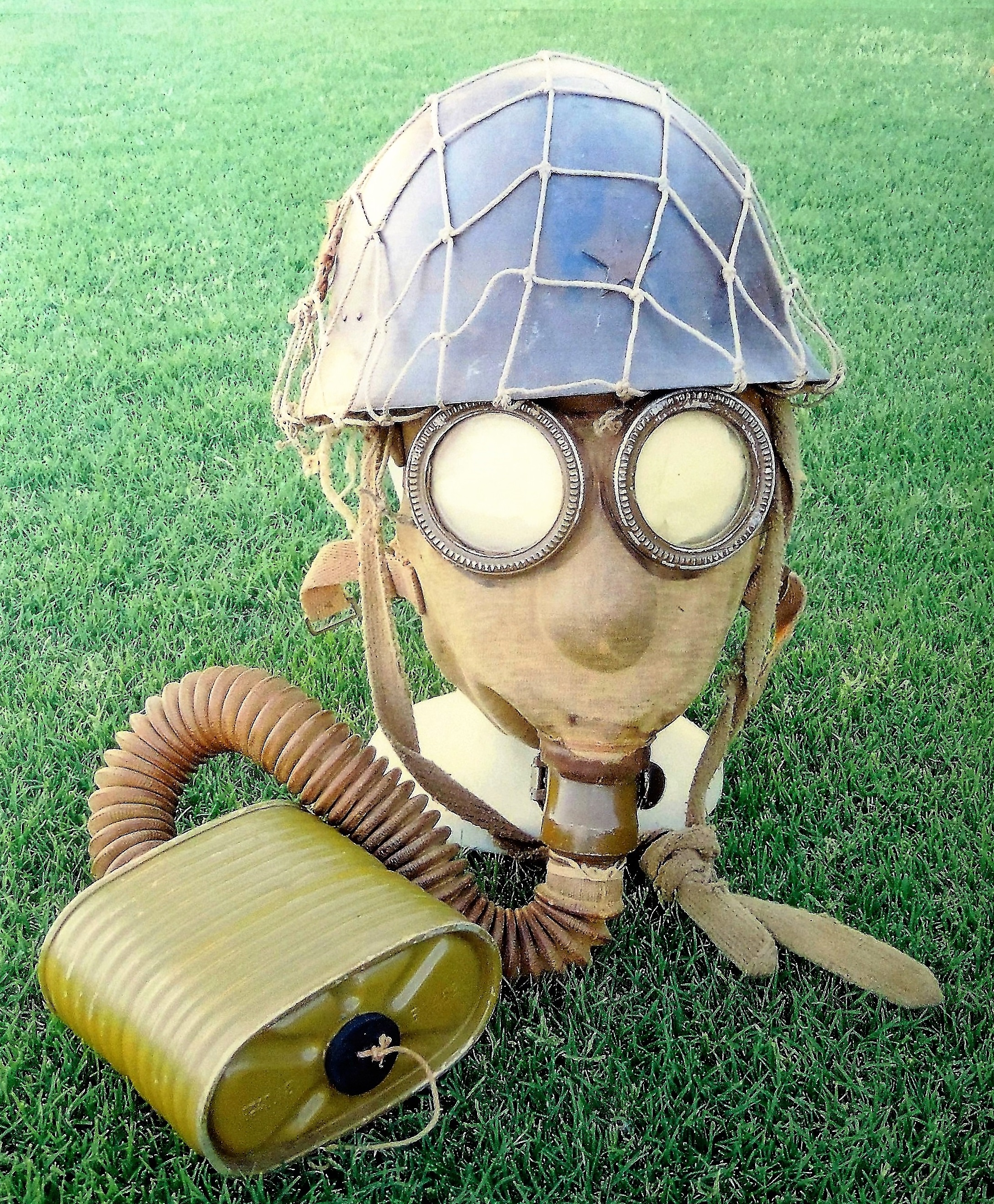
Figure 259-a. Type 99 army gas mask with helmet. Manufactured by Fujikura. 1944. |
d. Japanese Civilian gas mask type 1, Model A (improved).
This gas mask (figure 260), although originally designed for civilian use, also is issued to Army personnel. The facepiece is tan colored with molded tissot tube and circular, glass, eyepieces with fixed rims. The tan colored canister is approximately 4 3/4 inches high, 5 1/4 inches wide and 2 3/4 inches thick. The carrier is a small rectangular canvas bag with a 1 1/2 inch diameter hole in the bottom.
